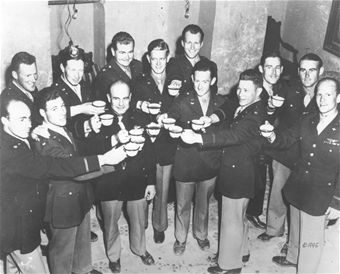Aristaeus
A-List Customer
- Messages
- 407
- Location
- Pensacola FL

At 07:38 on the morning of 18 April, 1942 The Hornet Task Force was about 650 nautical miles (1,200 km) from Japan, when it was sighted by the Japanese picket boat No.23 Nittō Maru, a 70-ton patrol craft, which radioed an attack warning to Japan. The boat was sunk by gunfire from USS Nashville. Doolittle and Hornet skipper Captain Marc Mitscher decided to launch the B-25s immediately—10 hours earlier and 170 nautical miles (310 km) farther from Japan than planned. After respotting to allow for engine start and runups, Doolittle's aircraft had 467 feet (142 m) of takeoff distance. Despite the fact that none of the B-25 pilots, including Doolittle, had ever taken off from a carrier before, all 16 aircraft launched safely between 08:20 and 09:19. (The 16th B-25 had been included only as a reserve, intended to fly along as an observation and photographic platform, but when surprise was compromised, Doolittle decided to use all 16 aircraft in the attack.) This was the only time that United States Army Air Forces bombers were launched from a U.S. Navy aircraft carrier on a combat mission.
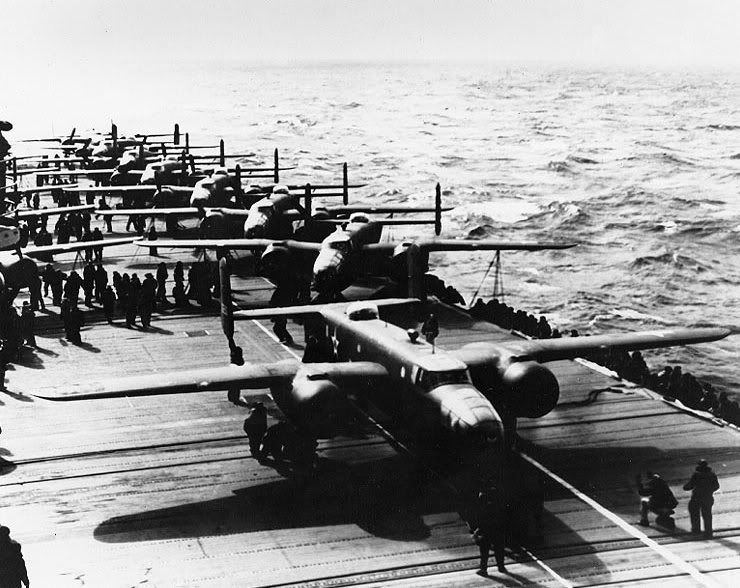
The B-25s then flew towards Japan, most in groups of two to four aircraft before changing to single file at wavetop level to avoid detection. The aircraft began arriving over Japan about noon (Tokyo time; six hours after launch) and bombed 10 military and industrial targets in Tokyo, two in Yokohama and one each in Yokosuka, Nagoya, Kobe and Osaka. Although some B-25s encountered light antiaircraft fire and a few enemy fighters over Japan, no bomber was shot down. Only the B-25 of Lt. Richard O. Joyce received any battle damage, minor hits from antiaircraft fire. B-25 No. 4, piloted by Lt. Everett W. Holstrom, jettisoned its bombs before reaching its target when it came under attack by fighters after its gun turret malfunctioned.
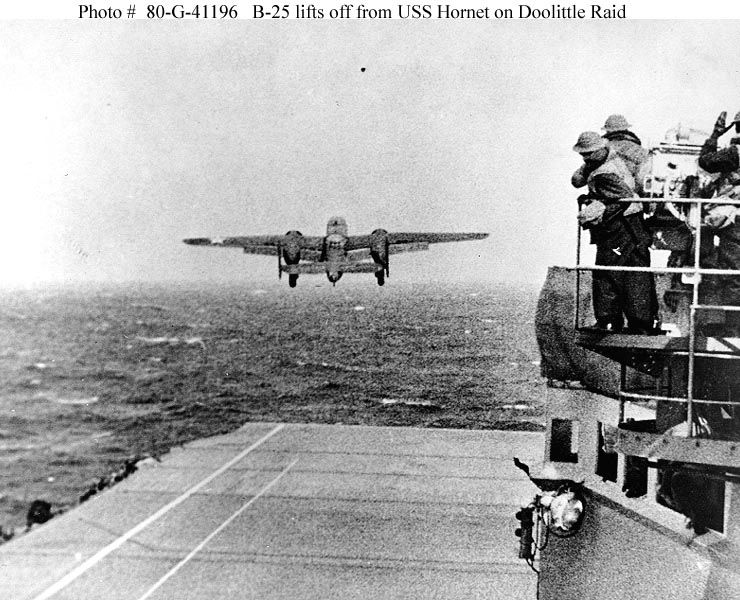
15 of the 16 aircraft then proceeded southwest along the southern coast of Japan and across the East China Sea towards eastern China, where several fields in Zhejiang province were supposed to be ready to guide them in using homing beacons, then recover and refuel them for continuing on to Chongqing, the wartime Kuomintang capital. The primary base was at Zhuzhou, toward which all the aircraft navigated, but Halsey never sent the planned signal to alert them, apparently because of a possible threat to the task force. One B-25, extremely low on fuel, headed instead for the closer land mass of the Soviet Union.
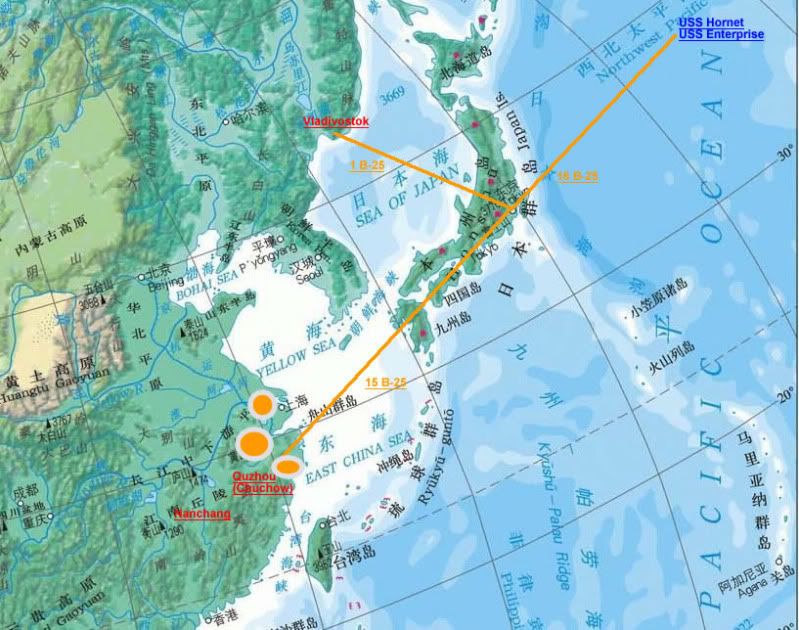
The raiders faced several unforeseen challenges during their flight to China: night was approaching, the aircraft were running low on fuel and the weather was rapidly deteriorating. None would have reached China at all except for a fortuitous tail wind as they came off the target that increased their ground speed by 25 knots for seven hours. As a result of these problems, the crews realized they would probably not be able to reach their intended bases in China, leaving them the option of either bailing out over eastern China or crash landing along the Chinese coast. Fifteen aircraft reached the Chinese coast after 13 hours of flight and crash landed or bailed out; the crew who flew to the Soviet Union landed 40 miles (65 km) beyond Vladivostok, where their B-25 was confiscated and the crew interned until they managed to escape through Iran in 1943. It was the longest combat mission ever flown by the B-25 Mitchell medium bomber, averaging approximately 2,250 nautical miles (4,170 km).
[video=youtube;1CTyJPLek94]http://www.youtube.com/watch?v=1CTyJPLek94[/video]
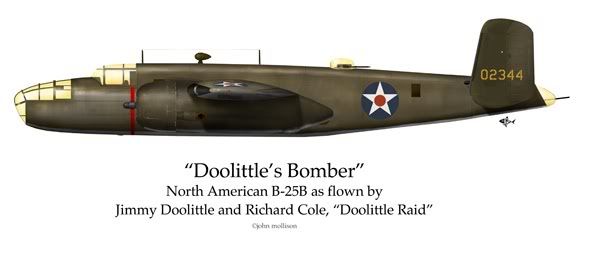
TECHNICAL NOTES:
Armament: Six .50-cal. machine guns; 3,000 lbs. of bombs
Engine: Two Wright R-2600s of 1,700 hp each
Maximum speed: 328 mph
Cruising speed: 233 mph
Range: 2,500 miles (with auxiliary tanks)
Ceiling: 21,200 ft.
Span: 67 ft. 6 in.
Length: 53 ft.
Height: 16 ft. 9 in.
Weight: 29,300 lbs. maximum
Cost: $109,670 (1943)
http://www.doolittleraider.com/
http://www.doolittleraid.com/b25.htm
